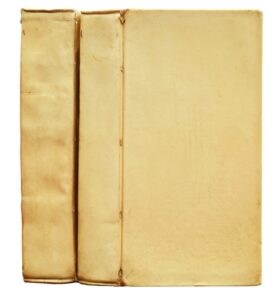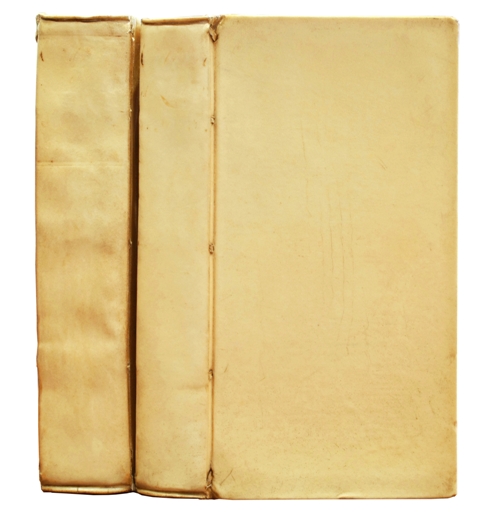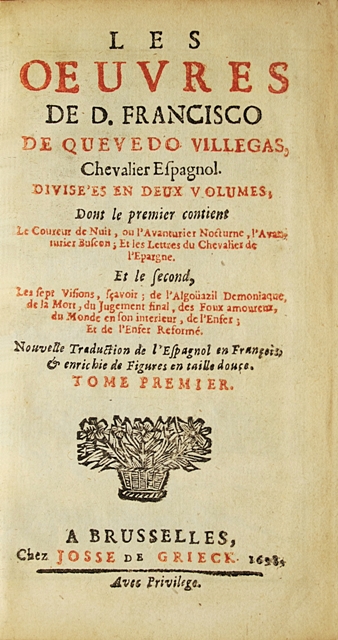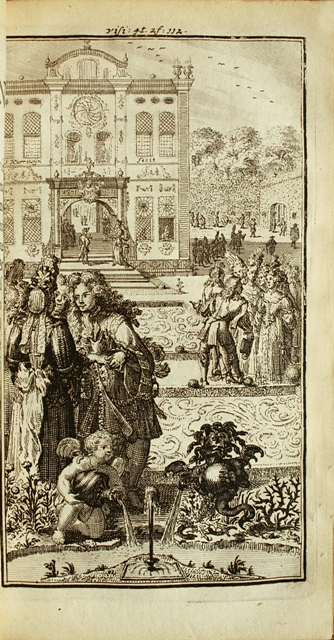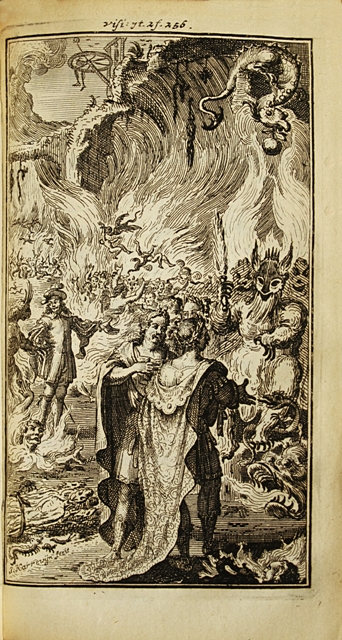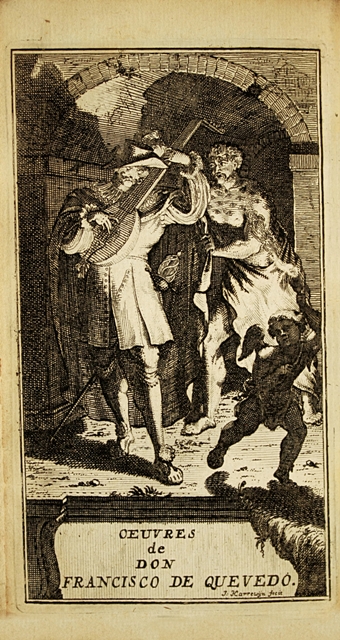Paris, chez Helie Josset, et se vendent à Bruxelles, Josse de Grieck, 1698.
A total of 2 works in two 12mo volumes [146 x 78 mm] of: I/ (2) ll. including the engraved frontispiece, 336 pp., (4) ll. of table and 7 full-page figures out of pagination; II/ (2) ll. including the engraved frontispiece, 205 pp. and 9 full-page figures out of pagination, (1) l. of title, 272 pp. and 3 full-page figures out of pagination. Full contemporary ivory vellum, flat spine, mottled edges. Contemporary binding.
First edition of the French translation of Quevedo’s Works, one of the major Spanish authors from Classical time. Brunet, IV, 1017.
It is also the first edition admirably illustrated by J. Harrewyn with 2 frontispieces and 19 full-page figures in first state. It has been reprinted in 1699, then in 1700 and 1718. Méon and Labédoyère owned it.
“Quevedo y Villegas (1580-1645), one of the grêtest Spanish writers, shined in the most varied genres: poetry, philosophy, literary critic, novel, political, thêter, religion”. Enrique Moreno Baez.
The works enclose the visions and short stories. “The Visions enclose 5 satirical fantasies that tend to be moralistic, most of which dating from the author’s youth. Censorship first refused (1610) to authorize the work, giving as a pretext that the Holy Scripture was held up to ridicule. However that may be, the Sueños weren’t published before 1627, not in Castile but only in Barcelona, Valencia and Saragossa, and under the title: ‘Sueños discursos de verdades descubridoras de abusos, vicios y engaños en todos los oficios y estados’. It was a grêt success; but Quevedo, exposed to the remonstrance of the Holy Office, was forced to publish in Madrid (1631) an expurgated version.”
Here, more than in any other work, stands out the singular genius of the author, a genius where the liking for intellectual combinations is united to the most ferocious and macabre fantasies.”
Precious wide-margined copy preserved in its attractive contemporary vellum bindings.
See less information
